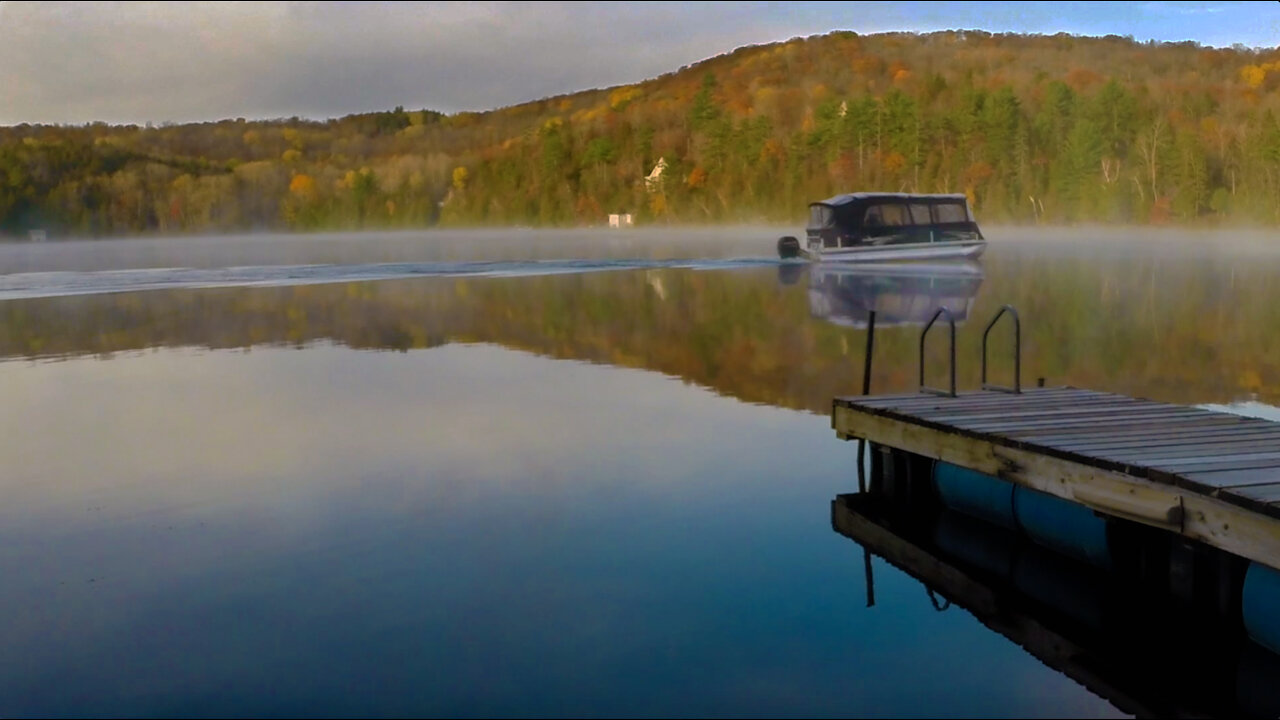Premium Only Content

Foggy October lake burn-off. Timelapse
Enjoy this early morning moody scene set by the steam rising off the surface of Lac Sainte-Pierre in Quebec, Canada.
A misty morning fog conjures a sense of mystery—but why the fog appears isn't so mysterious once you understand what it is and how it forms. It’s a beautiful sight, and one that becomes more common when the weather shifts from warm summer sunrises to crisp, cold autumn mornings. The phenomenon goes by many names, including steam fog, evaporation fog, frost smoke and sea smoke. So what makes it happen?
Fog forms when cool air and warm water meet and, more specifically, when the difference between the temperature and the dew point is less than 4° Fahrenheit.
Water is heated by the sun and stays warmer than the air during the cool night. When the cold layer of still air settles over the lake, warm water vapor from the lake evaporates, entering the cool air above it.
The thin, warm, moist layer of air over the pond then mixes with the cooler air from the land. As it cools, condensation occurs and a fog forms. It looks like steam rising off the water, hence the name 'steam fog.'
This happens not only over bodies of water but even over moist surfaces, like dew-covered meadows or even over your own skin if you get sweaty while jogging on a chilly morning.
Now, next time you go out for a morning stroll along the edge of a lake or a pond and you see this happening, you can appreciate not only the beauty of it but also the science behind it!
-
 0:04
0:04
AmplifiedLIFE
1 year ago $0.03 earned“Peep”-ing & Chirping Cardinal
121 -
 LIVE
LIVE
LFA TV
13 hours agoLFA TV ALL DAY STREAM - TUESDAY 7/22/25
4,018 watching -
 59:10
59:10
VINCE
2 hours agoThe Hunter Biden Interview That BROKE The Internet | Episode 90 - 07/22/25
67K62 -
 LIVE
LIVE
The Big Mig™
4 hours agoWill Hillary Clinton Finally Face Justice?
5,307 watching -
 LIVE
LIVE
Badlands Media
6 hours agoBadlands Daily: July 22, 2025
5,357 watching -
 LIVE
LIVE
Wendy Bell Radio
6 hours agoDemocrats Go Down In Flames
9,798 watching -
 1:08:18
1:08:18
Dear America
2 hours agoOBAMA IS DONE!! Everything Is Coming Out!! Tulsi Drops 230K MLK DOCS!!
93.3K110 -
![SoulFrame: Early Access Preview [DAY 2] + AD Reads - #RumbleGaming](https://1a-1791.com/video/fww1/0b/s8/1/a/B/v/4/aBv4y.0kob-small-SoulFrame-Early-Access-Prev.jpg) LIVE
LIVE
LumpyPotatoX2
2 hours agoSoulFrame: Early Access Preview [DAY 2] + AD Reads - #RumbleGaming
105 watching -

Randi Hipper
1 hour agoTRUMP MEDIA BUYS $2 BIILLION OF BITCOIN AS PRICE NEARS ALL TIME HIGH
5.97K -
 LIVE
LIVE
GloryJean
1 hour ago#1 Sniping POV on MnK 🖱️ 6.7 K/D
56 watching